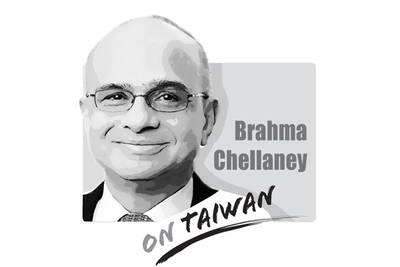The Chinese People’s Liberation Army Air Force (PLAAF) is set to modify its J-20 stealth fighters by re-equipping them with WS-15 turbofan engines, with the aim of gradually replacing the WS-10 series and Russian-made AL-31 turbofan engines, and has completed its first test flight of the modified fighter. What role would the J-20, which is touted as a fifth-generation fighter and the mainstay of the PLAAF’s air operations, play in the PLAAF’s future combat system?
China has maintained a high level of confidentiality regarding the specific details of the WS-15 engine. Using afterburners, the engine generates approximately 36,000 pounds of thrust, and the ultimate goal is to reach a thrust rating of 40,000 pounds.
However, this is only the minimum standard for US fifth-generation fighters, so it is still too early for China to think it can surpass the US’ advanced engine manufacturing technology.
The WS-15 engine has approximately 4,000 pounds greater thrust than the existing WS-10, providing a significant boost in performance for the PLAAF’s current aircraft.
However, the J-20’s thrust is still inferior to the US’ two fifth-generation fighter jets — the F-22 and F-35.
Nonetheless, for the US, the J-20 is already one of the biggest threats in air combat. US Pacific Air Forces Commander General Kenneth Wilsbach said that as long as the modernization of US air power continues to advance rapidly, the US is not worried about the J-20’s continually improving performance. The US Air Force and US Navy are striving to develop their respective next-generation air dominance initiatives with the aim of obtaining sixth-generation stealth fighters to serve as the next-generation mainstay of air combat.
China has always made good use of external propaganda directed at the international community. It has always tried to create an impression that exerts psychological pressure on its adversaries. Although China has made progress in the production of stealth aircraft and advanced crewed and uncrewed aircraft, its research and development strength in modern high-performance engines still lags behind the engineering technology of its Western peers. This can be seen from recent setbacks in the operation of China’s Comac C919 passenger airliner. With regard to improvements to the Xian Y-20 Kunpeng military transport aircraft, although it has successfully integrated the new Chinese-made high-bypass WS-20 engine, it is still uncertain whether this technology can be applied to other types of aircraft.
The newly modified J-20 fighter jet equipped with a pair of WS-15 engines is a long-awaited step forward for China’s air force and for its aviation industry.
However, while outside observers focus on the efficiency ratio of engines and the extent to which they can be manufactured domestically, Taiwan’s national defense research needs to pay more attention to identifying the battlefield role of China’s J-20 fighters. As China has completed the architecture of its third-generation Beidou navigation satellite system, Taiwan must, before it obtains the full next-generation version of the data link provided by the US, first and foremost get full access to real-time battlefield and defense zone images shared with the US. This way it can prevent China’s new-generation airpower vehicles from carrying out strategic raids on Taiwan. At this moment, this is the most urgent task.
Chang Yan-ting is a retired air force lieutenant general and an honorary emeritus professor at National Tsing Hua University.
Translated by Julian Clegg
The Executive Yuan recently revised a page of its Web site on ethnic groups in Taiwan, replacing the term “Han” (漢族) with “the rest of the population.” The page, which was updated on March 24, describes the composition of Taiwan’s registered households as indigenous (2.5 percent), foreign origin (1.2 percent) and the rest of the population (96.2 percent). The change was picked up by a social media user and amplified by local media, sparking heated discussion over the weekend. The pan-blue and pro-China camp called it a politically motivated desinicization attempt to obscure the Han Chinese ethnicity of most Taiwanese.
On Wednesday last week, the Rossiyskaya Gazeta published an article by Chinese President Xi Jinping (習近平) asserting the People’s Republic of China’s (PRC) territorial claim over Taiwan effective 1945, predicated upon instruments such as the 1943 Cairo Declaration and the 1945 Potsdam Proclamation. The article further contended that this de jure and de facto status was subsequently reaffirmed by UN General Assembly Resolution 2758 of 1971. The Ministry of Foreign Affairs promptly issued a statement categorically repudiating these assertions. In addition to the reasons put forward by the ministry, I believe that China’s assertions are open to questions in international
The Legislative Yuan passed an amendment on Friday last week to add four national holidays and make Workers’ Day a national holiday for all sectors — a move referred to as “four plus one.” The Chinese Nationalist Party (KMT) and the Taiwan People’s Party (TPP), who used their combined legislative majority to push the bill through its third reading, claim the holidays were chosen based on their inherent significance and social relevance. However, in passing the amendment, they have stuck to the traditional mindset of taking a holiday just for the sake of it, failing to make good use of

As strategic tensions escalate across the vast Indo-Pacific region, Taiwan has emerged as more than a potential flashpoint. It is the fulcrum upon which the credibility of the evolving American-led strategy of integrated deterrence now rests. How the US and regional powers like Japan respond to Taiwan’s defense, and how credible the deterrent against Chinese aggression proves to be, will profoundly shape the Indo-Pacific security architecture for years to come. A successful defense of Taiwan through strengthened deterrence in the Indo-Pacific would enhance the credibility of the US-led alliance system and underpin America’s global preeminence, while a failure of integrated deterrence would